
SRAM
Quarq has a long history of making power meters. With their first production power meters released in June of 2008. In 2011, Quarq was acquired by SRAM, and they became the first company to provide the first power meters integrated into a groupset. SRAM now uses the SRAM AXS App for connecting to the power meter for calibration, updates, and more (more on this below).
Unboxing
Upon opening the box, I found that the drive-side crank arm had sifted during shipping. After inspecting the crank arms, no damage was observed on either arm. The packaging therefore did its job as it was designed to do, but a little more security, such as a tie-wire, could probably prevent them from shifting during shipping.
I purchased the DFour power meter from competitivecyclist.com and it was delivered UPS Ground. The power meter box was loosely placed inside another box and the exterior box seemed a bit banged up. So, I imagine it had quite a rough ride getting to me.

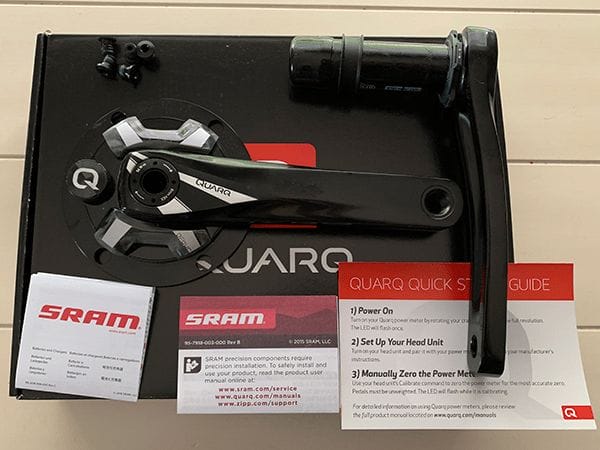
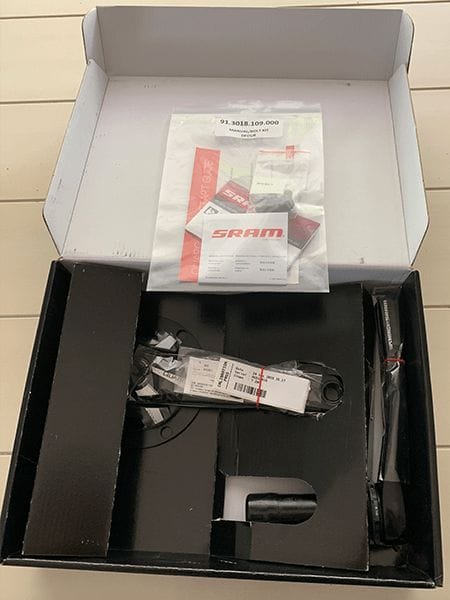
Quarq DFour GXP Spindle
This DFour power meter is paired with aluminum alloy crankarms. The spindle is for BB30 or BB30A bottom brackets. The spindle diameter is 30 mm, and the spindle width is 73 mm. If installing on a BB30A bottom bracket the preload adjuster must be removed and the 13.01 mm spacer is not used. For a BB30 bottom bracket installation (current method used) the preload adjuster is left on and the all the provided spacers are used.
A good description of the differences between BB30 and BB30A can be found here. An exploded view of the bottom bracket and crank of the assembly instructions can be found here.

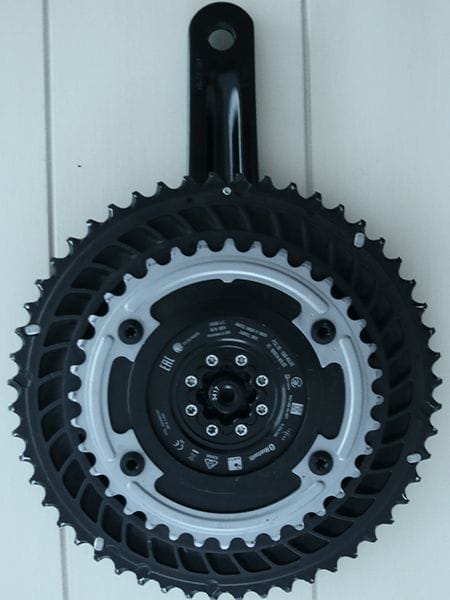
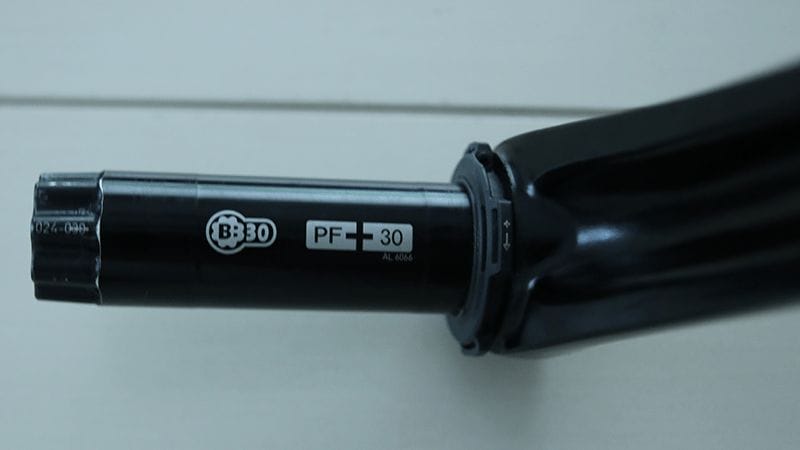

Chainrings
I am running a Shimano 105 groupset on the bike, so to keep the same theme, I chose to use 105 chainrings. Also, I also decided to use 105 chainrings because they are significantly cheaper than Ultegra and Dura-Ace chainrings. I am running a 2x setup with 52 x 36 tooth count.
The DFour concept is pretty interesting, in that SRAM would develop a crankset to fit their competitor’s chainrings. It makes sense that they would though. Shimano is yet to release an Ultegra or 105 power meter and as of now it seems they are quite some time out before they do. It is kind of a shame though, they aquired Pioneer power meters and have the technology to release a budget friendly power meter, but are sticking with a Dura-Ace only model. Therefore, this leave SRAM plenty of market space to offer a four bolt chianring pattern.

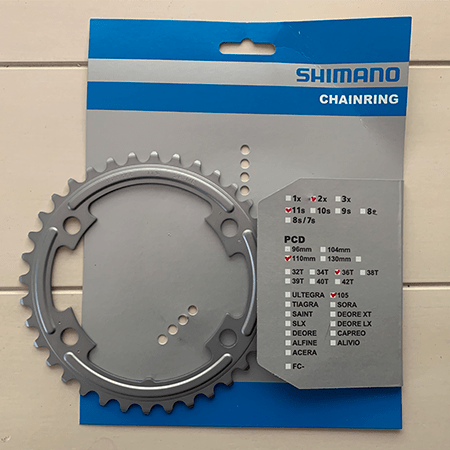
Chainring Installation
The chainring installation follows the Shimano chainring manual which can be found at si.shimano.com. The large chainring is installed with the letters facing out and with the chain drop pin set behind the crankarm. The small chainring installed with the markings facing away from the crankarm and with the triangle marking aligned with the crankarm.
Once the chainrings are put into place, the chainring bolts and installed finger tight at first. Then in a crisscross pattern the bolts are tightened to 12-16 N-m (105-139 in.-lbs.) using a T-30 tool.

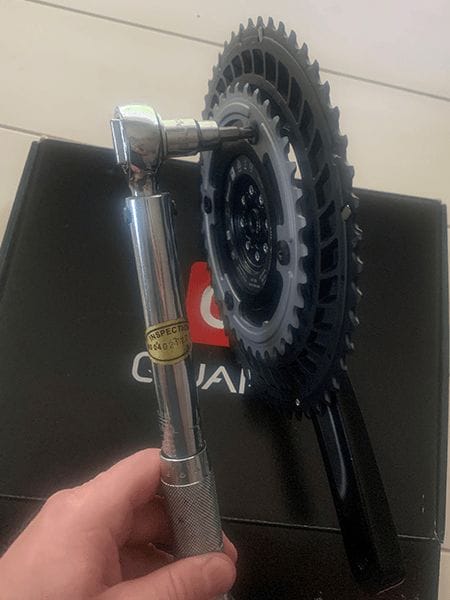
This crankset was designed to aesthetically match Dura-Ace chainrings. As can be seen, the 105 chainrings have a matte finish, whereas the DFour spider and crankarms have a glossy finish. Also, the topside of the chainring arms is not flush with the spider. I am unsure if Dura-Ace chainring are flush, but I would imagine they do. Again, these are only an aesthetic issue and does not affect the performance.
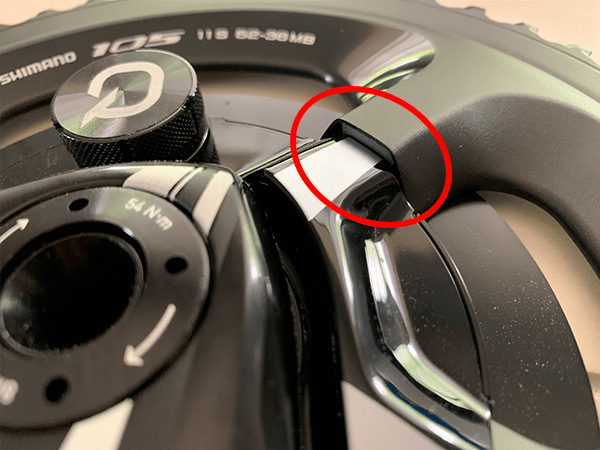

Chainring Installation
The crankset is installed on the bicycle like other cranksets. First, the spindle should be greased where the bearings will rest. Unlike other cranksets, the spindle is attached to the non-drive-side crankarm. The spindle is pushed through the bottom bracket and the drive-side crankarm is attached to the spindle using an 8 mm Allen wrench and tightened to 54 N-m (478 in.-lbs.).
DFour Crankarm Specs
Here is a table of different cranksets to compare their weights. The DFour crankset with aluminum crankarms (current crank being reviewed) is 417 g (14.8 oz) more than it’s carbon counterpart. The DFour is significantly cheaper and could probably stand up to a little more abuse and neglect and carbon crankarms. Price was the main reason for choosing the alumium version over the carbon one.
| Crankset | Mass (g) | Weight (oz) |
|---|---|---|
| SRAM Quarq DFour Aluminum | 1005 | 35.5 |
| SRAM Quarq DFour Carbon | 588 | 20.7 |
| Ultegra FC-6800 w/ Pioneer PM | 855 | 30.2 |
| Ultegra RC-6800 | 681 | 24.0 |
| Ultegra RC-R8000 | 689 | 24.3 |
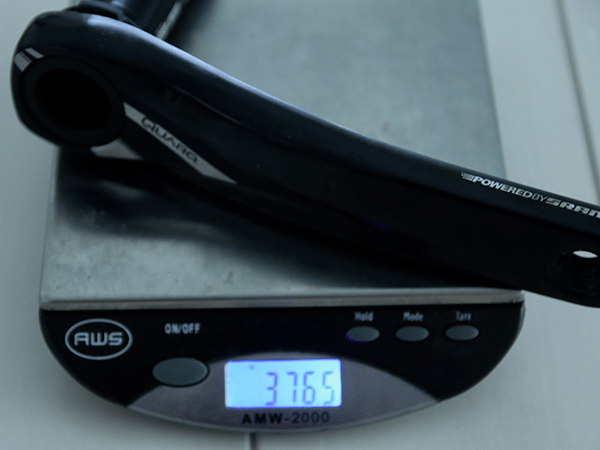


Connecting to the AXS App
The steps to connect your Quarq power meter to AXS app are laid out next.
- Download the app and your smartphone or tablet. Here an Apple iPhone is used.
- Open the app and you will be led to a blank window.
- In the upper right corner touch the + button to add a bicycle.
- Once the bicycle has been added, spin the crankset to wake up the device.
- Press the SEACH FOR PART button to find the crankset.
- Once the crankset it found, your crankset will show up on the window. Press the CONNECT button to connect the device to the phone or tablet.
- Press the ADD TO BIKE button to add the device to the newly added bike profile.
- Lastly, check to see that the firmware is up to date. Select the bike then select then select the crankset, then update firmware.


Power Meter Results
Two power tests were performed. One was a 2 on 2 off with varying efforts and the other was 2 x 10 min effort. The tests were performed on a Kinetic R1 Direct Drive Bike Trainer in erg mode. The Kinetic R1 power reads about 30 W higher on average (more on this in a later review), but the trends between the two devices are similar.
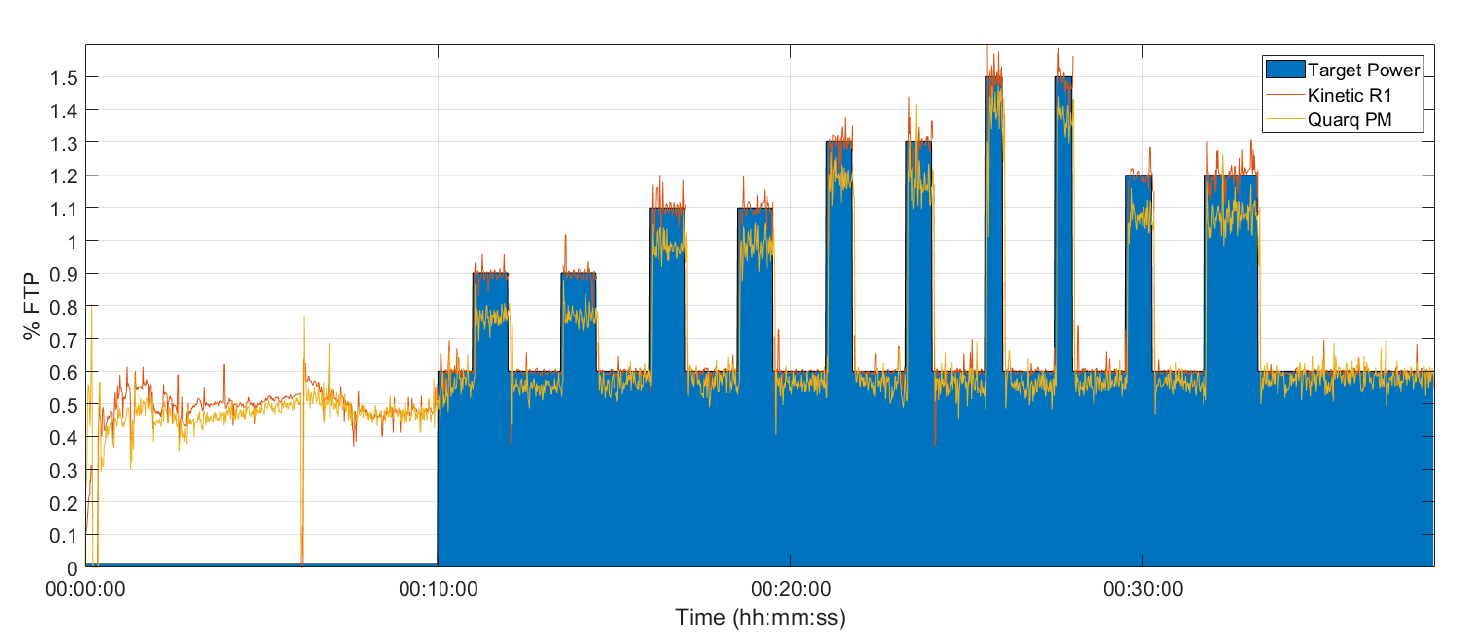
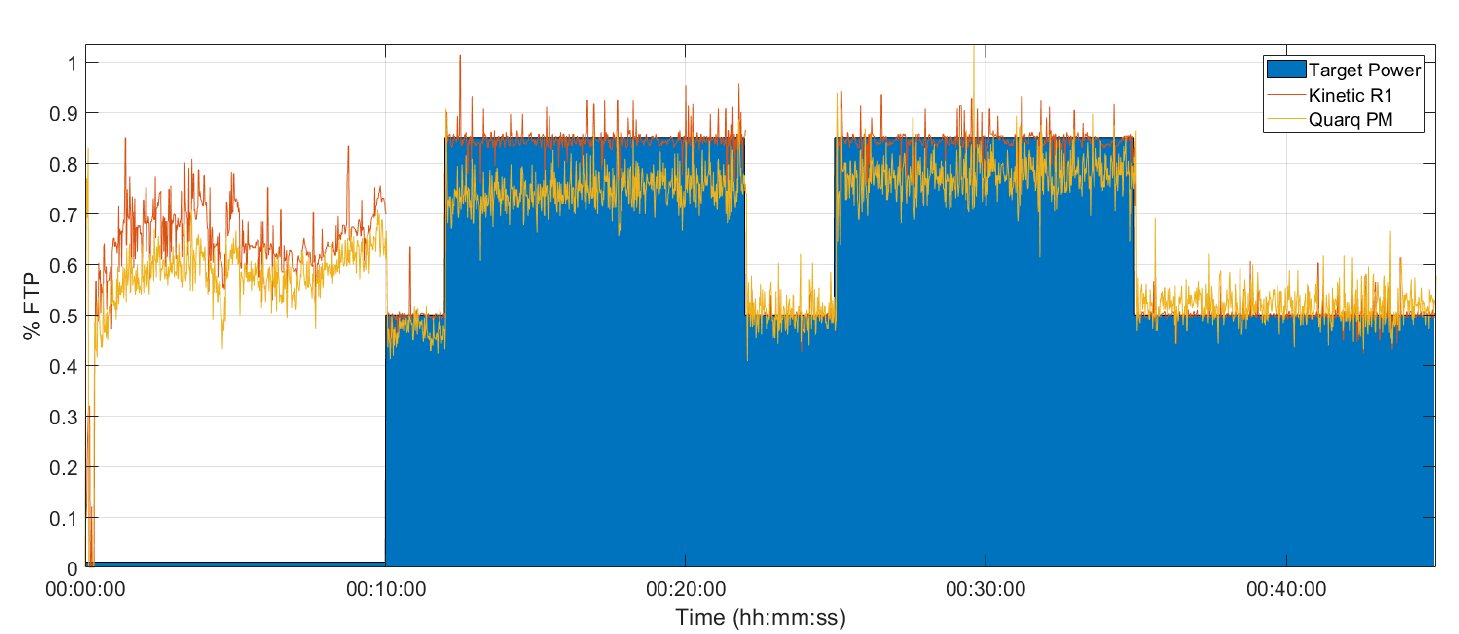
Now we will just look at the Quarq power meter alone and smooth the data a little to a 3 second average. At the lower Watts there is less fluctuations and along the different intervals the power remains consistent. Another thing to note is that these two rides were ridden sequentially. This was done to see if there was a change in power with steady use and heat introduced into the system. It appears that this is not an issue.
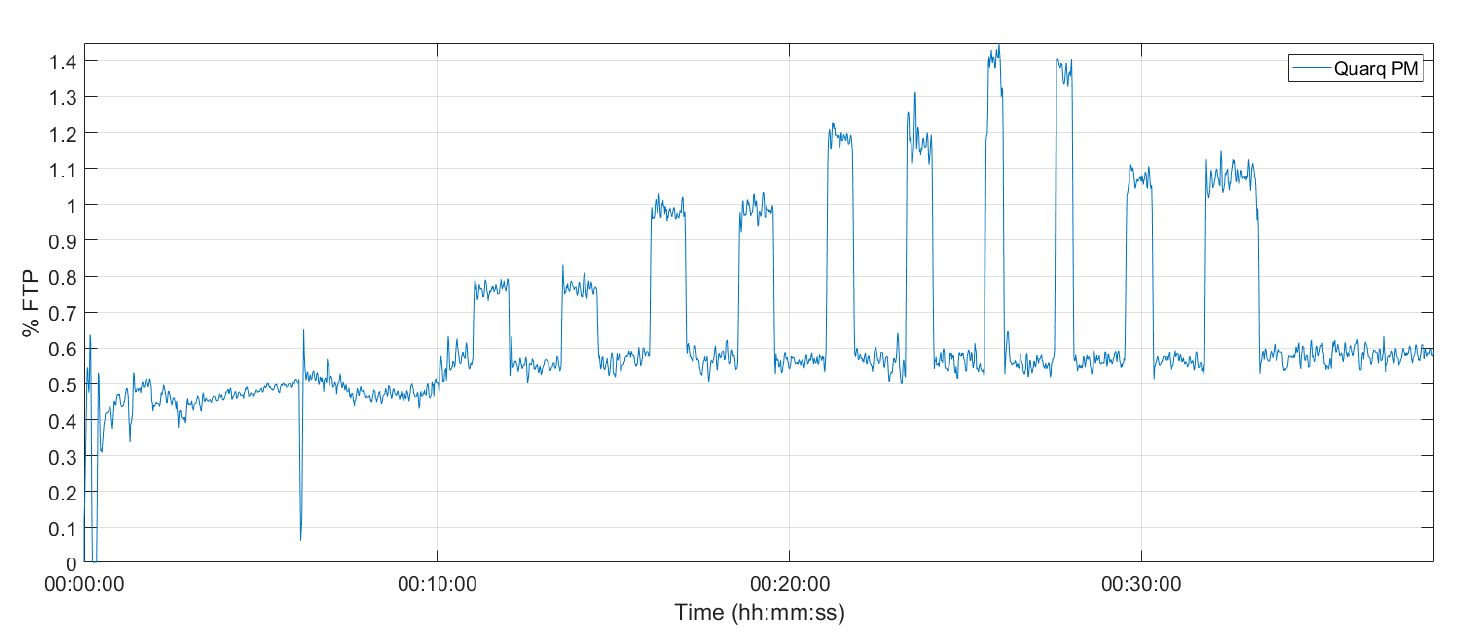
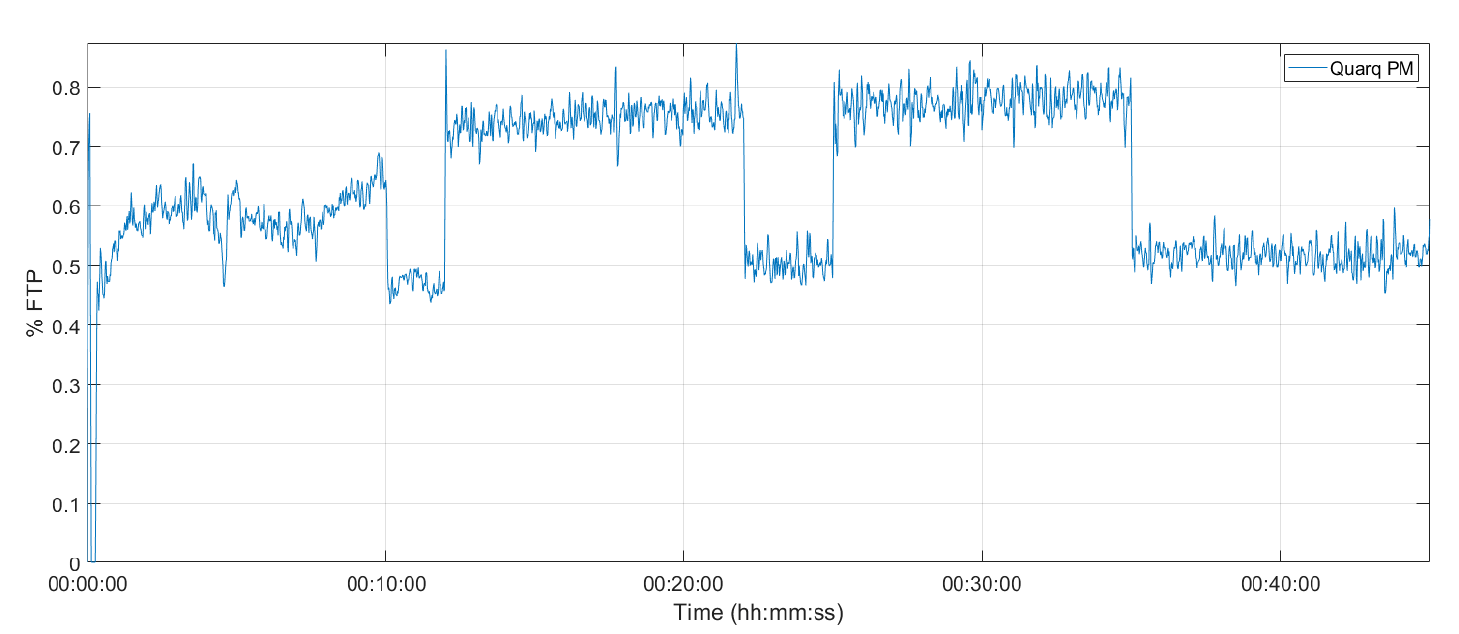
Lastly, here is a zoomed in graph at the first interval. There is a large initial overshoot of power and then the power levels out fluctuating around the target power. The second interval shows less of an overshoot and a steadier power through the interval.
One feature that I do enjoy is that since the power is measured at the spider, the DFour can determine the power output of each leg. Seeing the power balance is a great way to make sure
5 Great Features
1) Ability to measure power from each leg. Since the power is measured at the spider, the DFour can determine the Watts each side produces. The power balance can be seen in post analysis. This is good to see if there are any discrepancies in strength between each leg.
2) Stiffness of crankarms. I have put over 1500 Watts and had no issues and the power transfers instantaneously to the bike frame.
3) Durability. Since the crankarms are made from aluminum alloy the are very durable and I have no worries if they are to get banged around
4) Stylish looks. These cranks are very aesthetically pleasing. The probably look better with Dura-Ace chainrings but the glossy black finish is very sleek.
5) Battery life. I’ve had various other power meters and it seems like I am constantly changing the batteries. The DFour has lasted many hours of riding and the battery door is very sturdy.
POWER METER ACCURACY
We must face it, power meters are not accurate, thus the need for a claimed +/- # accuracy rate, but the lower the accuracy rate the greater confidence one will have in the device. Yes, Strava can provided estimated power that are “close enough”, but those values are empirically derived from thousands of hours of user power data and heart rate data. Thus, a power meter with a slightly worse accuracy rate, say +/- 3%, may still provide better results than estimated power Strava.
To my next point though, accuracy is not the most important thing of a power meter, but that it is giving you consistent power values day to day (precision over accuracy). If you are using a training plan based on your functional threshold power (FTP), the goal is to increase you FTP. If you are following your properly designed training plan and your power meter consistently gives you precise power values, that is most important. In other words, does it matter if your FTP is 300 W, but your power meter tells you it is 305 W, 325 W, or 275 W? No. Training properly with a consistent power meter will result in an increased FTP, and the subsequent FTP test will undoubtedly be higher.
Not to get too deep in to training theories or what the best method for training is, training based off FTP is probably one of the most used methods. Training off FTP has flaws, and FTP is only a single parameter and does not tell you the whole story. Thus, the stability of a power meter over a long period of time is what one would most desire. There are plenty of scientific studies comparing commercially available power meters, and these studies have found variations between individual power meters and have found larger variation when comparing different power meters.
When comparing two power meters (two power meters on a single bike), one would hope similar trends (e.g., large spike when starting a sprint). When comparing two different power meters one must realized that different companies use different methods for calibration, so a small variation can be introduced here. The location of where the power is being recorded (e.g., pedal based, crankarm based, spider based, hub based, etc.), typically results in a different power value, but if the calibration is based on forced applied at the pedals, then theoretically the power reading should be the same.
One thing that should be noted is that a power meter does not directly measure force. Power meters use strain gauges to measure a change in voltage in the electrical circuit. When a force is applied to the pedal, the pedal spindle/crankarm/spider (depends on where the strain gauge is placed) is stressed and is deformed. These deformations stretch, shrink, or twist the strain gauge causing a change in the resistance of the strain gauge. Through a calibration process, power is derived from the relationship between the force applied and the voltage change.
The last thing to think about is in what range is the stated accuracy rating accurate for. If the stress strain curve of me crank material is linear, one should think that this accuracy rating is good for the entire service range. If most of your power work is in lower watts it is possible that the accuracy is greater than if you are doing higher power efforts. Also, it is possible that steady cadence will provide better results than doing a lot of surging. Without more information from the power meter companies, or some sort of standardization on how accuracy is defined and how calibration is performed, different power meter will always have variations between them.
Many power meters have some sort of temperature compensation, and one would assume that during the calibration stage this is considered. But like in scientific studies, these are ideal lab situations, and things are different when they are subjected to real world conditions. It is safe to assume that most power meter will be well behaved over the short term and if one is performing FTP test regularly, then power accuracy is less of a concern and the precision is more reliable. Accuracy is only a concern if one is bragging about their FTP and, in reality, one should keep that number private.
Final Thoughts
I have owned power meters in the past, and to date this SRAM Quarq DFour power meter has given me the least amount of trouble and in fact I have not had any issues with it. I have had plenty of hours on it and I am still on the original battery. I have not had and connection or drop connection issues. No issues with water intrusion. I can be confident is saying that it is very reliable, durable, and consistently provide good data.
Author Conflicts
With this being my first power meter review, little other data comparable data collected, and it being the newest and most recently calibrated, in future test it will be my baseline to test other power meters against. Soon I will be reviewing a Kinetic R1 Smart trainer and compare results to it.
I purchased the products with my own money. I did not receive any compensation from SRAM or Quarq to review these products. These products were reviewed on my own accord to provide information about the product and hopefully provide useful information to help guide you in deciding to purchase the product.
Support JayLo Cycling
Did you find this post useful? If you have any questions, feel free to leave a comment below. If you have any suggestions of future reviews or things you would like to see in the future contact me. My reviews are thorough and often take a significant amount of time to produce. Please consider checking out my Instagram, YouTube, and Facebook accounts to show me support there. If you feel generous and have the ability, consider buying me a coffee to help support this site.

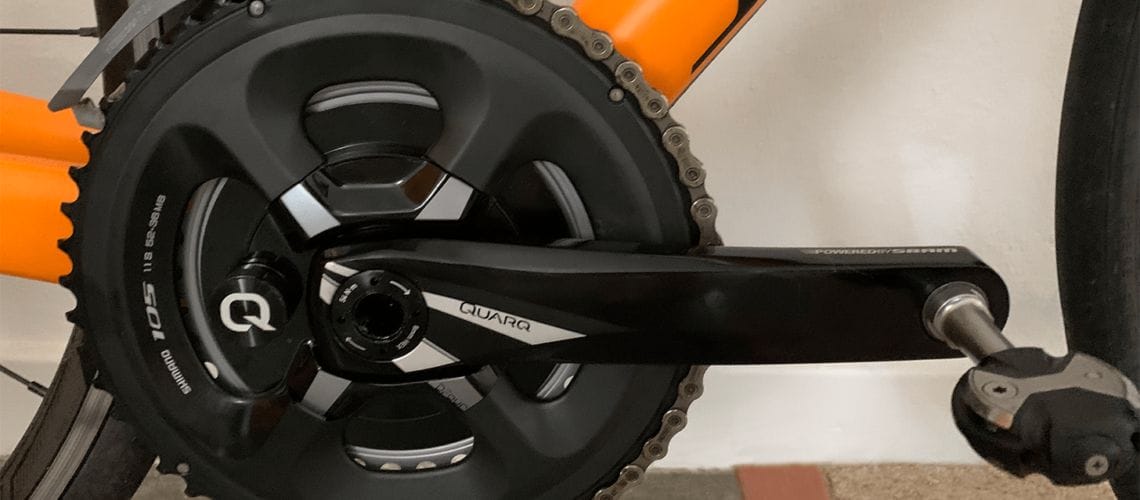
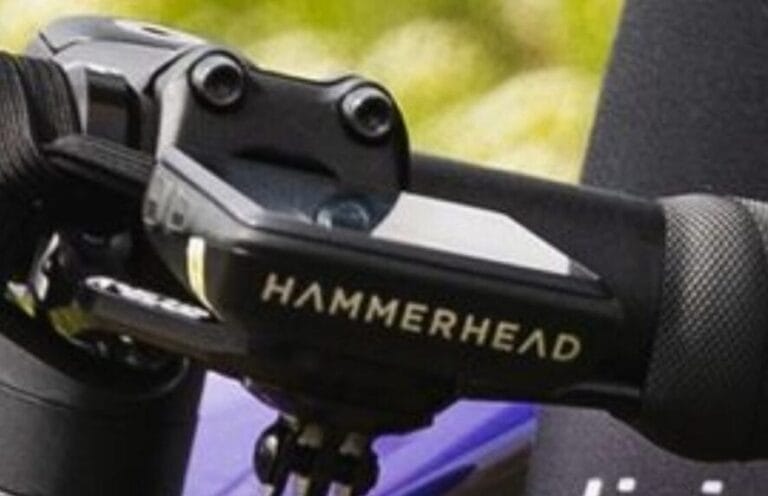
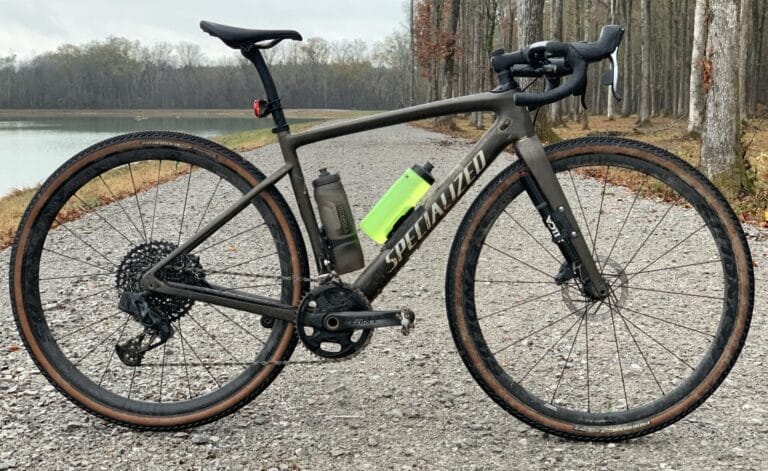
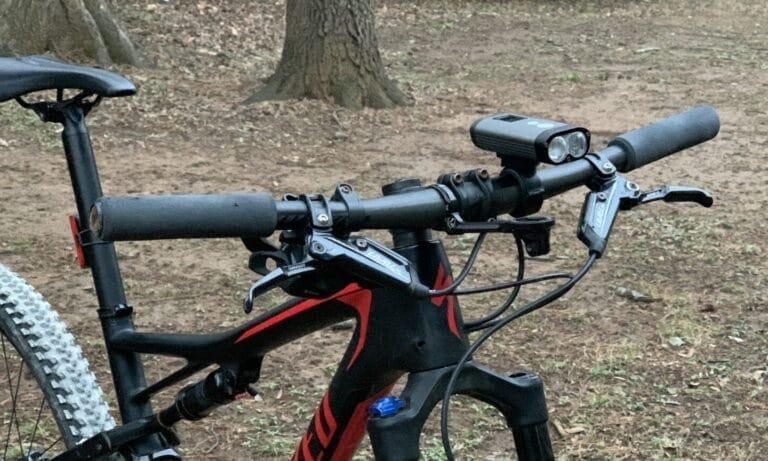
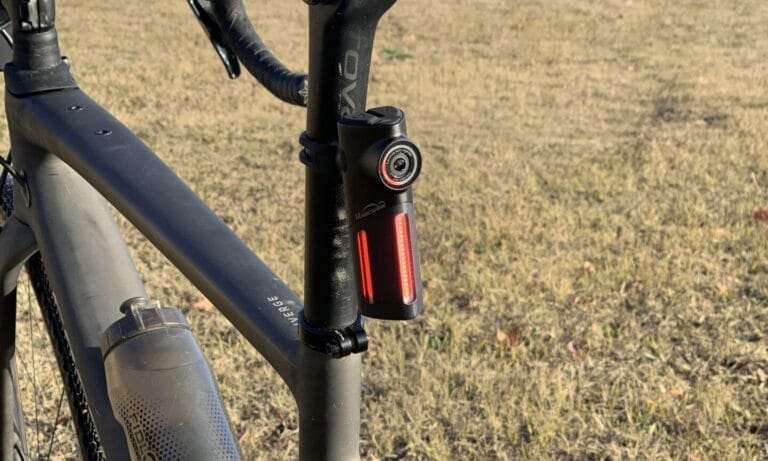
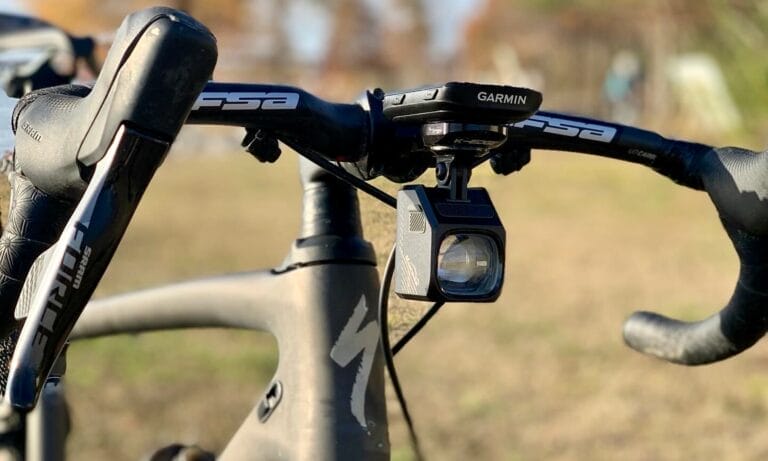
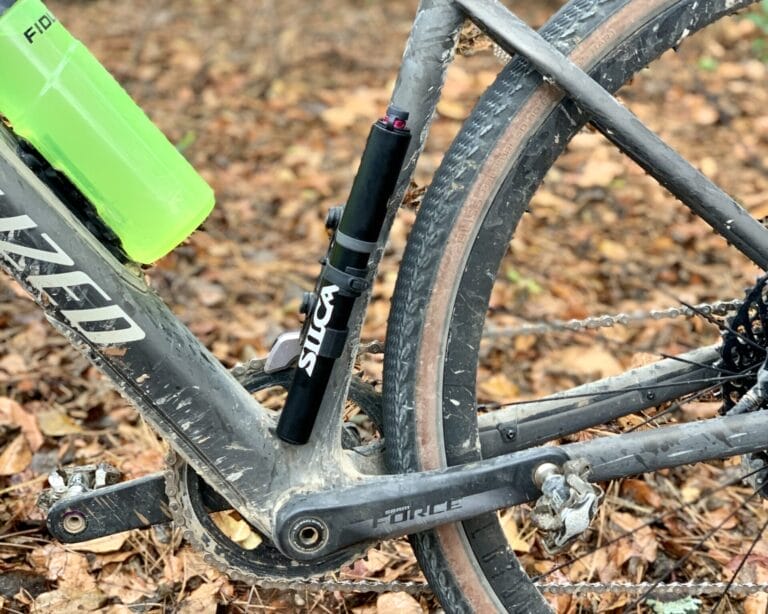
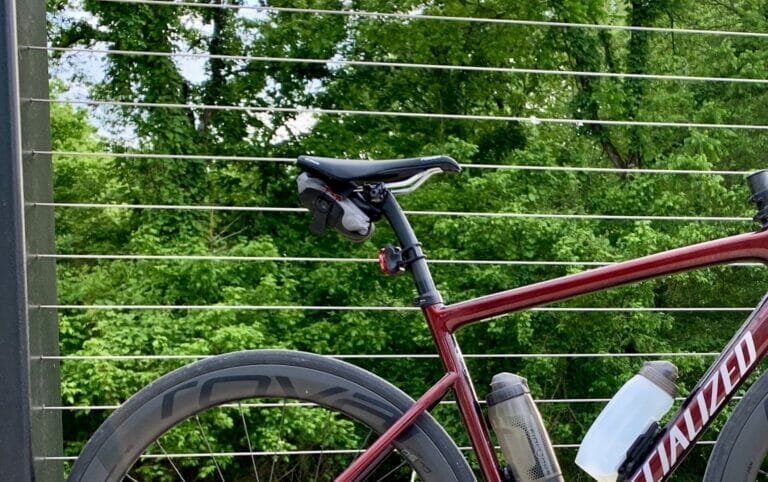
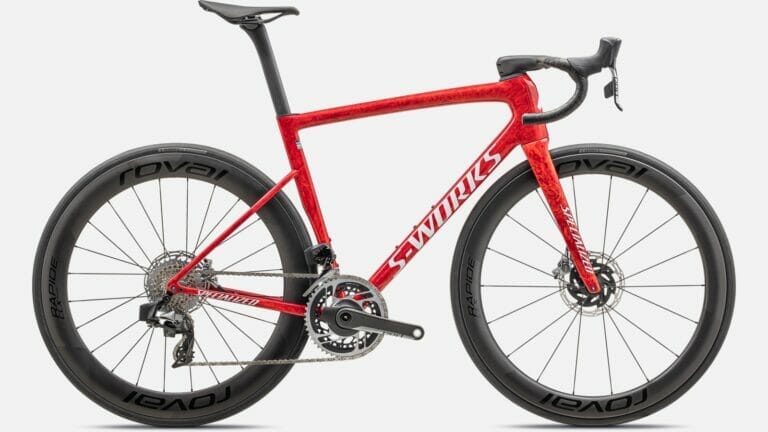
3 thoughts on “SRAM Quarq DFour Cycling Power Meter Product Review: 5 Great Features”
Pingback: Free Hammerhead Heart Rate Monitor with Purchase of Karoo 2 [Updated] - JayLo Cycling and Adventures
Convert the standard crankset Shimano 12S (Spindle 24mm) with a Spider Quarq Dfour Power Meter (Dub)
Hi Jason,
For my guidance, soon I’ll get my new 2024 Giant Defy, 105 12 speeds Di2 and I looking for this Spider SRAM QUARQ DFOUR.
I would like to install the Shimano chainring 52-36 on this Spider Power Meter.
1rst: On the Defy with the “Press fit bearing” (Spindle 24mm Diameter) must I change the BB 24mm for a BB Dub?
2nd: I’m confused with many criteria:
– The widened spindle (stance) from 145 to 150mm!
– The chainline and the Q-factor of the crankset and the Frame
– Installing the spacers on one side or two sides?
Could give me the recipes?
Thanks
Andre, Thank you for reading my post and taking the time to comment. I will start that I am no expert on this, but with all the different standards available it is tough to know everything about all the different BBs around. It is probably best to check out your local bike shop to make sure the conversion is possible or if someone else online has done this. I would probably go with the first option that way you get all the right parts the first time.
But anyways, DUB is a 29 mm diameter spindle so the Shimano BB is not going to work.
For the wider spindle you will want to check with a professional bike fitter to see if you need the wider Q factor. https://www.sram.com/en/service/articles/dub–road-wide
You need to measure your frame shell width to determine which BB you need. Check this link for spacer requirements too. https://www.sram.com/globalassets/document-hierarchy/compatibility-map/road/dub-choose-a-road-bottom-bracket-compatibility-map.pdf